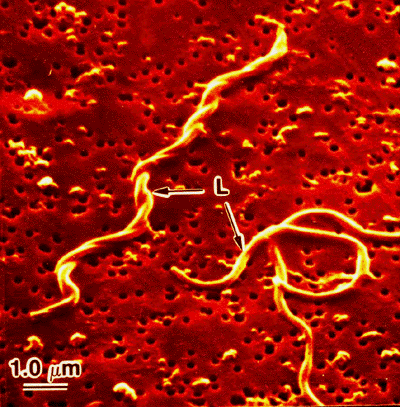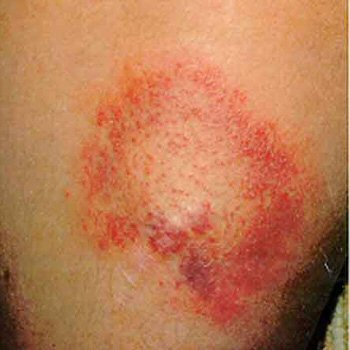Lyme Disease

Deer tick; a carrier of Lyme disease
 Bacteria that causes Lymes disease | Lyme disease, also known as Borreliosis is caused by the bacteria Borrelia burgdorferi (B. burgdorferi) that can be carried by certain ticks. Ticks obtain this disease from infected mice and deer, and once the tick becomes a carrier it can then be passed onto humans. Lyme disease is seen in the Northeast, upper Midwest, and along the Pacific coast, during the late spring, summer, and early fall.
When infected with the disease a person may become ill with flu like symptoms such as fever and muscle pain. A signature symptom of Lyme disease is a circular rash at the site of the bite with a clear area in the center. The rash is usually larger than 2 inches wide, and can appear from a few days to a month after the bite. In later stages of the disease symptoms include stiff neck and joints, itching and strange behavior.
|
"A signature symptom of Lyme disease is a circular rash at the site of the bite with a clear area in the center. Rash is usually larger than 2 inches wide, can appear from a few days to a month after the bite." (Example at right) |  |
Prevention and Treatment
The ELISA test can be done to check for antibodies in the blood that fight the Lyme disease causing bacteria. Physical exams can be done to check for signs of Lyme disease in later stages.
The Effect of Global Warming on Lyme Disease
Lyme disease is seen in North America, Europe, and Asia. The transmission cycle of the disease through tick species are affected by local ecology and climate.
Due to climate change, the range of Lyme disease is spread to higher altitudes due to a shift toward milder winter that ticks may survive and distribute.
Milder winters and longer spring and autumn seasons lengthens the seasons of tick activity and enhance endemicity.
Sources for Lyme disease page:
http://www.nlm.nih.gov/medlineplus/ency/article/001319.htm
http://www.grida.no/climate/ipcc_tar/wg2/364.htm
http://www.wadsworth.org/databank/borreli.htm
http://www.cirrusimage.com/Arachnid/deer_tick_800x600.jpg
http://www.accesskent.com/Health/HealthDepartment/CD_Epid/images/lyme_rash.jpg
http://www.nlm.nih.gov/medlineplus/ency/article/001319.htm